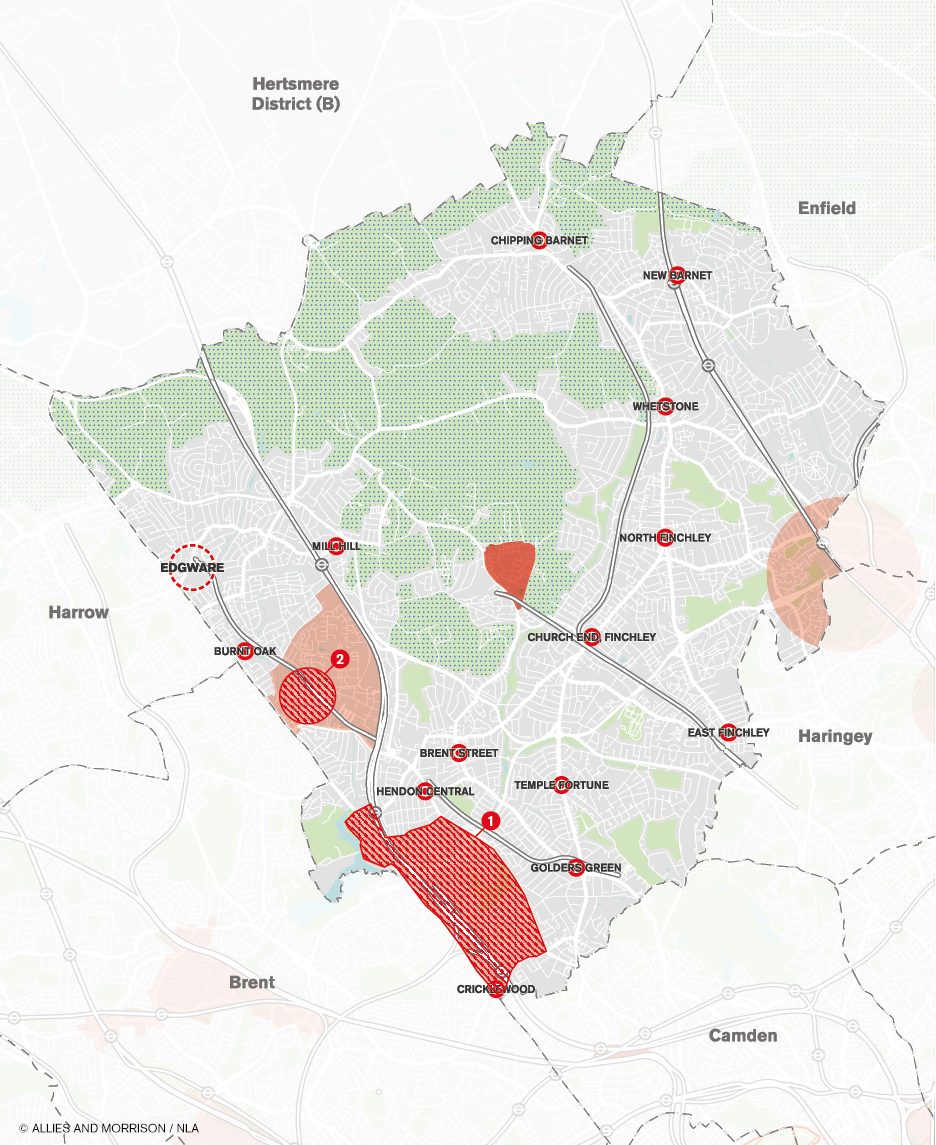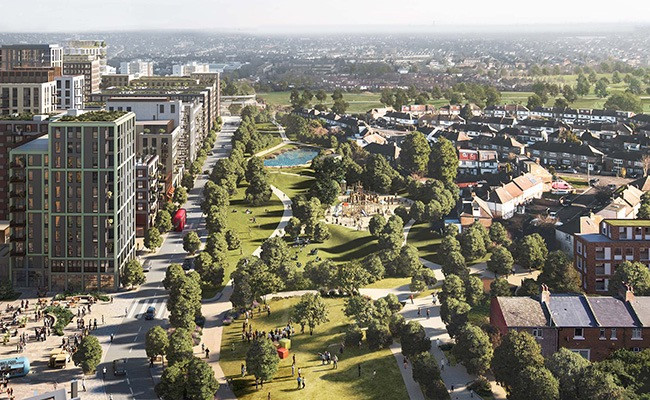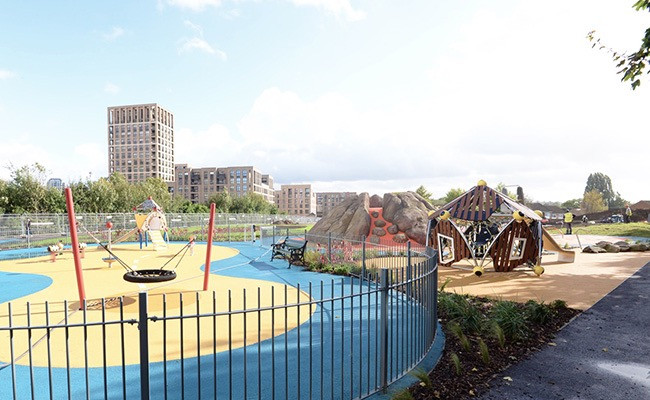

 Investment Opportunities
Investment Opportunities Opportunity Areas
Opportunity Areas Area of Intensification
Area of Intensification Central activity Zone
Central activity Zone International or metropolitan
International or metropolitan Major
Major District
District Borough Boundary
Borough Boundary Green Belt
Green Belt Metropolitan open land / Other open spaces
Metropolitan open land / Other open spaces Rail station
Rail station Railway track
Railway track Foreshore
Foreshore Water
Water
Brent Cross Cricklewood is the biggest redevelopment and growth programme Barnet Council has ever undertaken and one of the most ambitious in Europe.
At the heart of the scheme is a new neighbourhood called Brent Cross Town, a 180-acre, net zero development being delivered in partnership between Barnet Council and Related Argent; for which the first homes will be occupied later this year.
Brent Cross Town will deliver:
On 10 December 2023, the council opened London’s newest main line station, Brent Cross West, one of the first rail infrastructure projects to be delivered entirely by a local authority. Brent Cross West is the gateway to Brent Cross Town, connecting to and from central London in as little as 12 minutes. The new public overbridge also provides pedestrian access across the railway line, linking communities either side of the station for the first time since it was built more than 150 years ago.

Colindale is a neighbourhood of Barnet undergoing a major regeneration programme, building more than 6,400 high quality new homes within a pipeline of 12,760 up to 2036.
The level of growth is supported by significant investment in infrastructure, including:
Barnet Council is building a sustainable borough that is fit for the future. Working with partners on one of the country’s most ambitious development programmes we will deliver 35,500 new homes by 2036, including 1,000 new council homes, to serve resident communities and to accommodate a growing and increasingly older population.
Over the last five years, Barnet has received more than £90 million in development contributions, enabling the council to further enhance the borough and support residents to live fulfilling, healthy and independent lives. Resident satisfaction with the local area as a place to live is consistently higher (83%) than the London average (79%).
The borough continues to have a strong economy, with more than 4,305 new businesses registered in Barnet in 2021 alone. The council will invest almost £30 million in our largest town centres over the next 10 years.
In places like Brent Cross, Chipping Barnet, Colindale, Edgware, Finchley Central and North Finchley the council is leading complex, long-term regeneration programmes to enhance the borough. The council has approved an average of over 4,000 homes pa over the last three years, compared to an annual target of 2,349 homes set in the 2017 London Plan.
The Brent Cross Cricklewood scheme will create space for up to 25,000 new jobs and 7,500 new homes. A new train station alongside Barnet’s new park town, Brent Cross Town, will establish Brent Cross Cricklewood as a prominent new town centre for North London.

Population projections 2041 447,000
London plan new homes (ten-year target) 23,640
“Our vision is to work together to be one of the most sustainable boroughs in London. As a new administration, this is the start of our journey to future-proof Barnet and put sustainability and communities at the heart of everything we do, ensuring everyone can benefit from green growth and that no-one is held back.
We want to create a local green revolution, developing skills today to realise the potential of tomorrow whether that’s to help deliver our ambitions on zero carbon development and more affordable homes, to build a network of local suppliers to turbocharge our green economy, or to encourage digital, cultural, and creative industries that help further our sustainability goals.
For us, this is as much about celebrating our diversity and promoting equality and inclusion, as it is about addressing the climate emergency. We are a council that cares about people, places, and the planet, and we want to seize all the opportunities for change to make Barnet socially, economically, and environmentally sustainable. Our ambition is to be an exemplar of what a successful and sustainable 21st century borough looks like.”